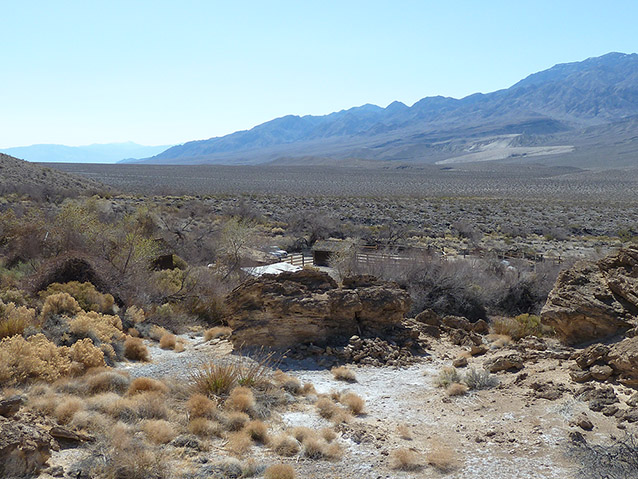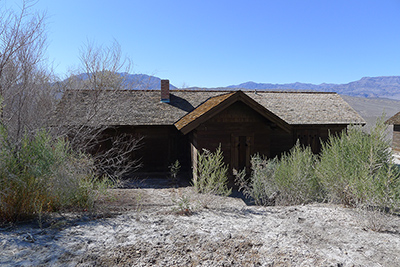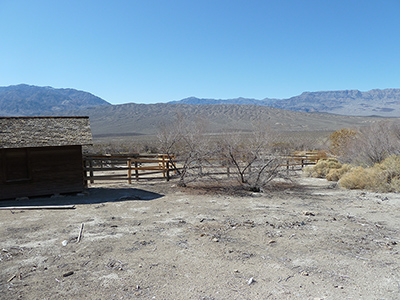Lower Vine Ranch served as the residence for Walter Scott (perhaps better known as "Death Valley Scotty"), one of the storied figures associated with the American mining frontier, between 1930 and 1952. It is part of the Death Valley Scotty Historic District, which is regionally significant in the areas of 20th century architecture, folklore, and social history, and of local significance in the fields of archeology, art, and invention.

NPS

NPS
The Scotty’s Castle complex and Lower Vine Ranch serve as a reminder of the excesses of mining promotion during the early 20th century, the frontier romanticism connected with it, and the conspicuous consumption practiced by the wealthy during the 1920s. The architecture typifies those values.
The district as a whole is closely associated with one of the best-known and most colorful figures produced by the American mining frontier—"Death Valley Scotty" (Walter Scott). By 1916, Scott had been living in the Death Valley region for over a decade, where he devoted much of his time to publicizing one or more mysterious, but actually non-existant, gold mines.
The friendship between Walter Scott and Albert Johnson, a mid-western insurance magnate, began in 1904 when Scott tried to tried to swindle the insurance man, just as he had several other easterners. Their friendship lasted several decades, and Johnson became Scott's financial support for a good portion of his life. Scotty lived in the main residence of Lower Vine Ranch between 1930 and 1952. As he grew old and infirm, he spent the last two years of his life living at Scotty's Castle.

NPS
Lower Vine Ranch, a 1500-acre property in Death Valley National Park, is located on an alluvial plain on the mouth of the Grapevine Canyon. The historic extent of the property is physically defined by a perimeter fence that was built by Albert Johnson in the 1920s. Several buildings and structures remain and are characteristic of a small, working ranch. Features include a residence, garage, hay storage, blacksmith shop, corrals, reservoirs, roads, and a wooden bridge.
The most prominent buildings at Lower Vine Ranch, all constructed of redwood stained a dark brown, include Scotty’s ranch house, garage, and grain shed. Scotty’s ranch house, along with the other out buildings, are simple, finely crafted structures in a bungalow style, a typical architectural style found throughout California in the 1920s.
Today, Lower Vine Ranch displays the seven aspects that determine integrity as defined by the National Register of Historic Places. The landscape characteristics and associated features convey the significance of the historic site with the majority of historic fabric remaining from the historic period of significance, 1907-1954.
Quick Facts
- Cultural Landscape Type: Designed
- National Register Significance Level: Local
- National Register Significance Criteria: B,C
- Period of Significance: 1907-1954
Landscape Links
Last updated: December 21, 2020
